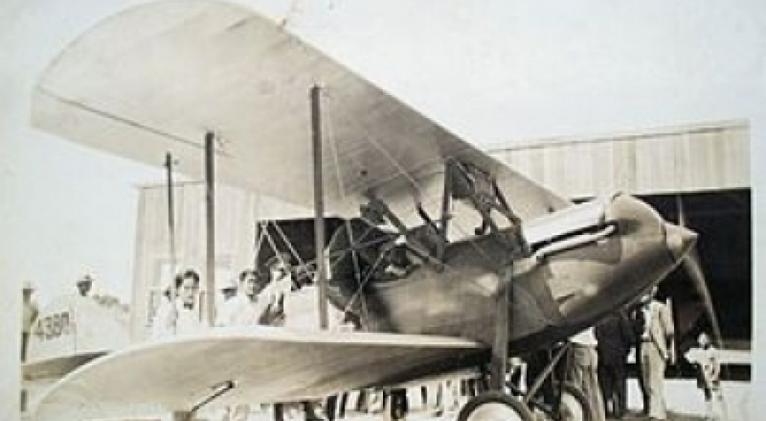Chatting Files: Potaje’s Air Adventures

Emilio Solórzano, Potaje, managed to give new attractiveness to skies in the western of Cuba.
Emilio Solórzano’s story, a.k.a. Potaje got to me through a nephew of Soloni, one of the most faithful followers of anecdotes of Havana who, in turn, had to deal with this character in an article published in El Mundo in August 1964.
Indeed this daring pilot entered the history of flying with a good reason: when Cubans seemed prey to the frustration caused by Gerardo Machado’s regime. He managed to add some action to the Cuban western skies piloting an aircraft that was falling to pieces and caused vertigos in the crowd, always looking for something new and weird events. Besides when generating adrenaline… nobody can beat him!
In the first three decades of last century, there were important events in the national life: in society there was a rebirth of the civic conscience with personalities like Rubén Martínez Villena and Julio Antonio Mella, one of the founders of the First Communist Party of Cuba; in economy sugar sales dive from crisis to crisis and the country is filled with "skinny cows"; politically it starts the Revolution of 1933, primordial for the country’s history.
Besides, around those years were frequent the chronicles of several air prowesses, among them the flight of the Plus Ultra, one of the greatest raids of the Spanish and world aviation. Starred by Ramón Franco, Julio Ruiz de Alda and Juan Manuel Durán (Pablo Rada takes the role of mechanic), pilots who early in 1926 joined the town Palos de la Frontera with Buenos Aires, the capital of Argentina, where they land successfully their hydroplane in Las Palmas of Gran Canaria, Rio de Janeiro, Recife and Montevideo.
The media show returns the following year with Charles Lindbergh who crosses the Ocean Atlantic in a non-stop fly between New York and Paris flying his monoplane, Spirit of St Louis. Luckily for the bravest souls, the North American pilot lands in Havana in 1928 in an official visit that many still remember, although the aviator shows in his presentations and interviews to be colder than ice.
Running along with the times the domestic newspaper El País, decides to buy an old Waco aircraft, uncovered, in order to take to Santa Clara, in the Cuban center, the newspaper matrix, to print the version belonging to the eastern provinces there and be ahead of the Herald of Cuba, its fiercest rival. For this reason, the newspaper incorporates an aircraft to its logo that went well with the Gothic letters on the name of the newspaper. After several inquiries, they hired as pilot the hyperbolic Potaje, Galician race driver for cars and motorcycles and deluxe auto salesman. Bad timing!
As expected, Potaje and his aircraft became popular at once: every afternoon the plane departs from a centrally located airstrip in Havana and crosses three provinces heading for the village of Martha Abreu, in a voyage filled with boasts and jokes: over Colon neighborhood he whirls and soars in his plane to say hello to his many friends, and in Jovellanos he often executed a looping the loop, trying to win the heart of a girl.
Soloni highlights in his article that the aircraft episode and the printing is not profitable; in consequence, El País gives up the idea after attempting the impossible. Of course the airplane will never fade of its distinguishing characteristic and the voice of the city spoke a new and funny name in its gallery of "heroes": Potaje. What else can be asked for?













Add new comment